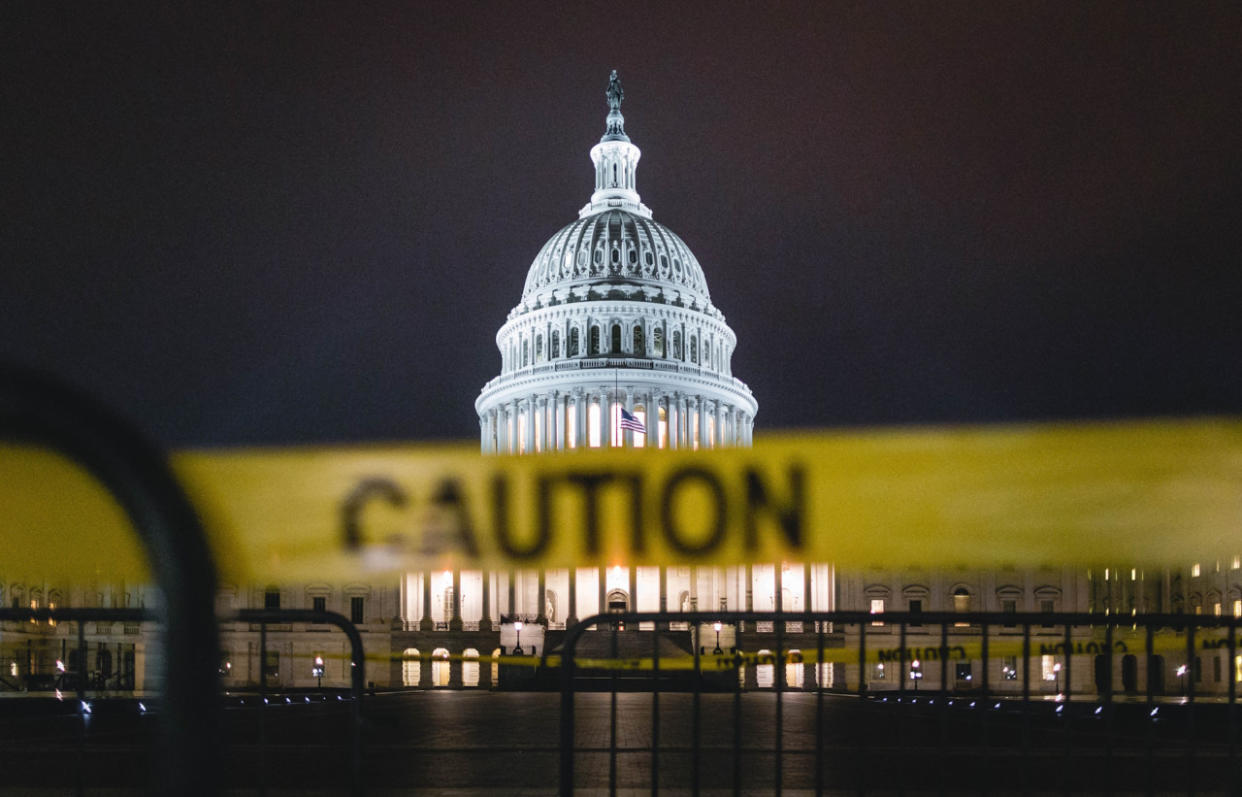How a U.S. government shutdown may affect weather and disaster prep

The United States federal government will shut down at 12:00 a.m. on Sunday, October 1, if lawmakers don’t authorize new spending bills this weekend to fund vast swaths of the government’s daily operations, including vital weather data and repairs and upgrades to critical computer modelling.
A government shutdown in the U.S. can have serious consequences for weather forecasters, disaster recovery, and climate and weather data used by experts throughout the global community. While most shutdowns only last for a day or two, some have dragged on for weeks.
Here’s how a U.S. government shutdown would affect weather data and disaster preparedness in the days and weeks ahead.
Funding is finite, and tensions flare as the deadline approaches
Government shutdowns can have high-stakes consequences across the U.S. and around the world.
American federal agencies like NOAA, NASA, and the National Park Service are forbidden from spending money without direct approval from Congress. Lawmakers approve of this spending through a series of appropriations bills that cover projects as lofty as the next Moon missions and as humdrum as keeping the spotlights shining on the Washington Monument.
DON’T MISS: Canadian astronaut Jeremy Hansen chosen to fly around the Moon on Artemis 2
These spending bills all expire on a certain date. Under normal circumstances, Congress passes new bills before that expiration date in order to keep things running smoothly.

President Joe Biden greets House Speaker Kevin McCarthy as he arrives to deliver his State of the Union address, Tuesday, February 7, 2023, on the House floor of the U.S. Capitol in Washington, D.C. (Official White House Photo by Adam Schultz)
But increased polarization has turned this relatively bland chore into a spicy ordeal.
Republicans currently hold a very slim five-seat majority in the House of Representatives, meaning that individual lawmakers in this 435-member body can wield significant leverage by threatening to scuttle a deal, essentially triggering a government shutdown unless their priorities are addressed.
This year, the last dollars allotted to keep the government functioning runs out at 11:59 p.m. on September 30, forcing the government to shut down beginning on October 1.
Lifesaving forecasters forced to work without pay
The most tangible effect of a shutdown is the closure of national parks, monuments, and attractions—including destinations like Yellowstone, the Statue of Liberty, and possibly even the Smithsonian museums in Washington, D.C.
But essential services like weather forecasting keep on running.
Thousands of government forecasters monitor the skies 24/7 and issue forecasts, watches, and warnings that are critical to the protection of life and property. This includes the National Hurricane Center's (NHC) forecasts for all tropical systems in the Atlantic Ocean.
WEATHER HISTORY: The interesting story behind NOAA’s founding in 1970
These forecasters are the epitome of essential workers—and they’re expected to report as usual during a shutdown, working without pay for the duration of the political standoff.

Meteorologists working at the U.S. National Weather Service office in Norman, Oklahoma. (NWS)
Critical equipment like weather radars, satellites, and observation stations also continue operating during a shutdown, though repairs and upgrades may be delayed until funding is restored.
The two major weather satellites that monitor the skies over the Atlantic and the Pacific are widely used among meteorologists keeping an eye on storms over Canada. These advanced satellites have many complex systems—some of which have failed in the past. Any delays in staffing or funding as a result of this government shutdown could affect satellite coverage over Canada.
Essential employees who work through a shutdown are given their rightful back pay once Congress approves new funding. Hundreds of thousands of federal workers missed two full paychecks during the 34-day shutdown in 2018-19, significantly harming morale and putting them in a financial bind.
Many folks who perform work for the federal government are contractors who may not be eligible for back pay during a shutdown. These workers may wind up looking for other jobs in the event of a prolonged disruption, which may harm long-term projects like weather modelling and computer system upgrades.
The prospect of a lack of staffing for weather models is a critical issue for meteorologists. Major computer models like the GFS, NAM, and hurricane models are run by stateside scientists.
If these experts are furloughed or deprived resources as a result of a shutdown, it could degrade model performance across North America and around the world in the weeks and months ahead, potentially affecting forecast accuracy.
WATCH: Canadian astronaut is heading to the moon, fulfilling a childhood dream
Websites go dark, disaster prep and recovery pauses
“The website you are trying to access is not available at this time due to a lapse in appropriation.”
This simple sentence on a white screen is all visitors will see when they visit most of NOAA’s websites during a federal shutdown.
While critical websites like the NHC will stay online to provide life-saving weather forecasts and warnings, most other webpages—including climate data, historical archives, and services like the agency’s climate change hub—will go dark for lack of funds to keep them running and a lack of employees to tend to their operation.
The American weather agency’s wealth of data is relied upon by experts around the world. This in-depth climatological data has uses that go far beyond checking a day’s record temperatures. Lawyers often seek out certified weather data for legal disputes. Investigators dive into radar data and wind reports after plane crashes.
It’s not just the weather that’s affected during a shutdown.

Old Faithful Geyser erupts at Yellowstone National Park on January 29, 2011. (NPS/Diane Renkin)
The Washington Post reported on September 27 that the Federal Emergency Management Agency (FEMA) began pausing $2.8 billion USD in funding in preparation for the shutdown, holding the money back as a reserve in case it needed to respond to an emergency during a funding lapse.
Such a gap in finances will affect FEMA’s efforts to engage in nearly 2,000 long-term disaster relief projects across the United States, according to a press release issued by the White House on September 28.
“For example, Wilson County School in Tennessee would continue being unable to push forward with rebuilding due to a deadly tornado that left 100 teachers and 1,000 students without classrooms,” the statement read.
The White House outlined further impacts for communities hit by recent storms.
“In New Jersey, millions of dollars meant to help rebuild a senior citizen building following Hurricane Ida would remain frozen. And in Florida, hundreds of millions of dollars of Hurricane Ian recovery obligations would continue to be delayed.”

SEE ALSO: Streets turn into small lakes in New York as heavy rain triggers flooding
Disaster preparedness would take a significant hit, as well.
FEMA’s National Flood Insurance Plan (NFIP) is a vital financial lifeline for folks who live in flood-prone areas. The NFIP’s funding stems directly through these annual spending bills authorized by Congress.
“Congress must reauthorize the National Flood Insurance Program (NFIP) by no later than 11:59 p.m. on Sept. 30, 2023, to avoid a lapse in the NFIP’s authority to sell flood insurance and borrow,” the program said in a warning on its website on September 29.
Header image courtesy of Unsplash.

